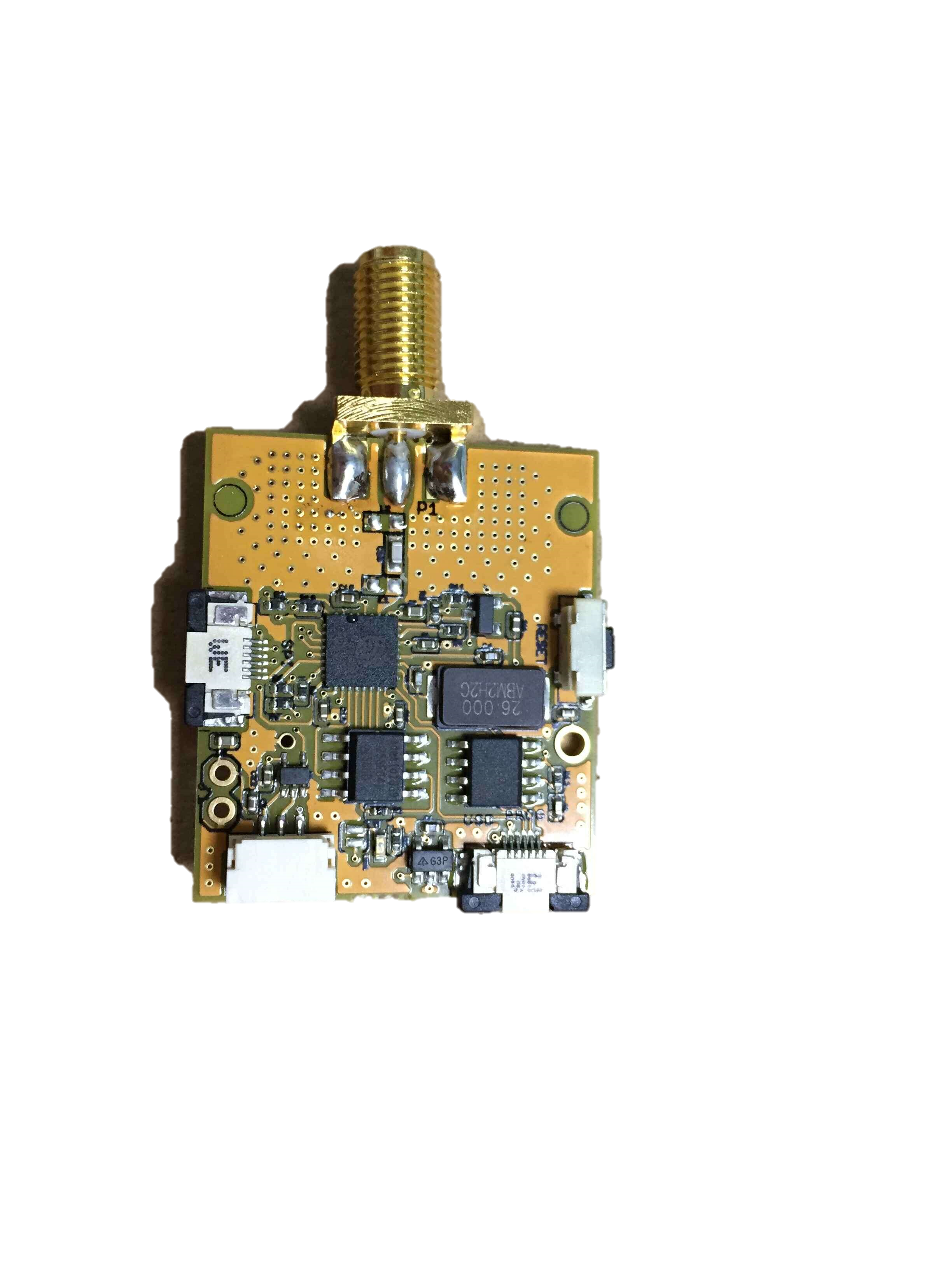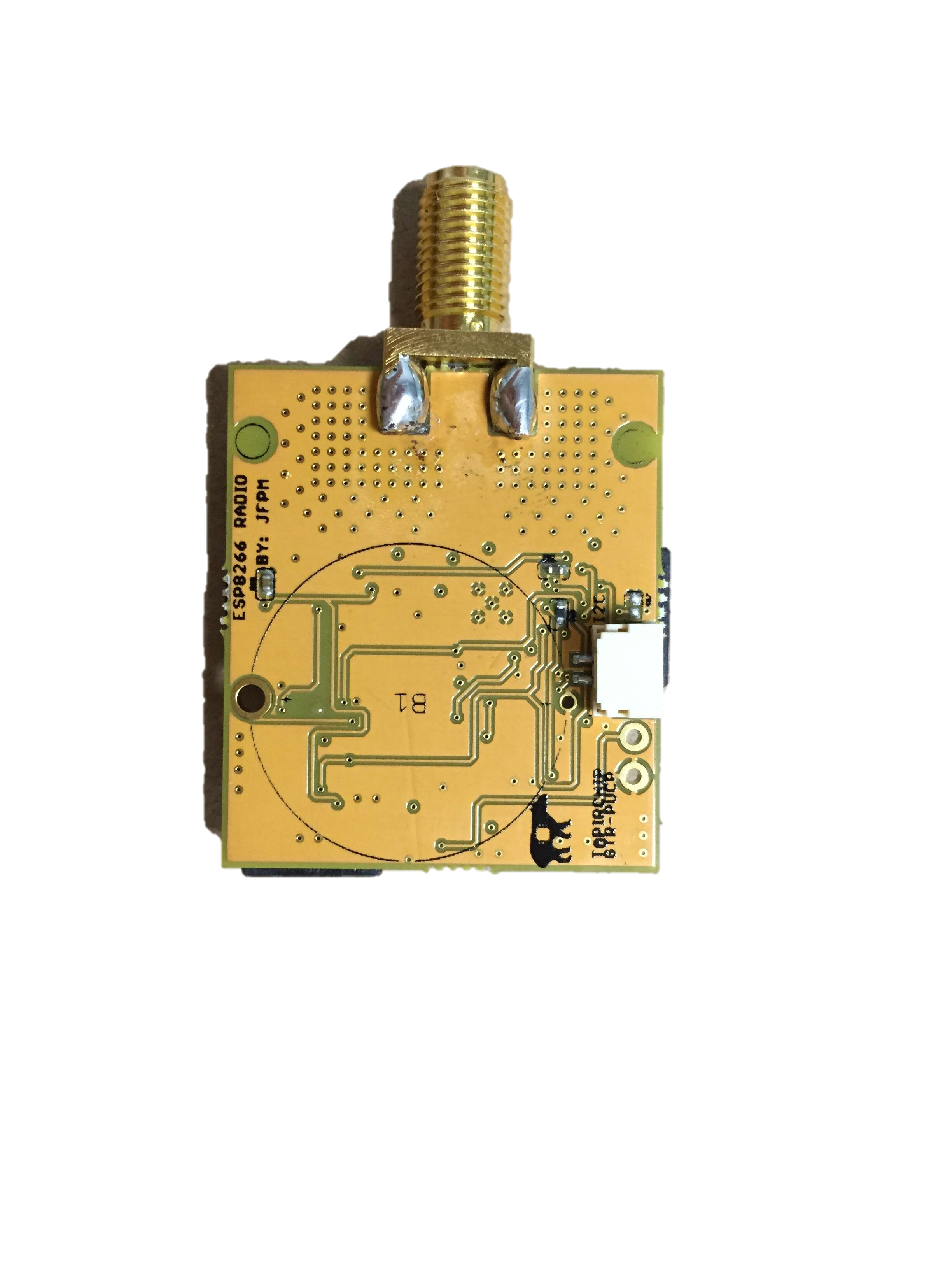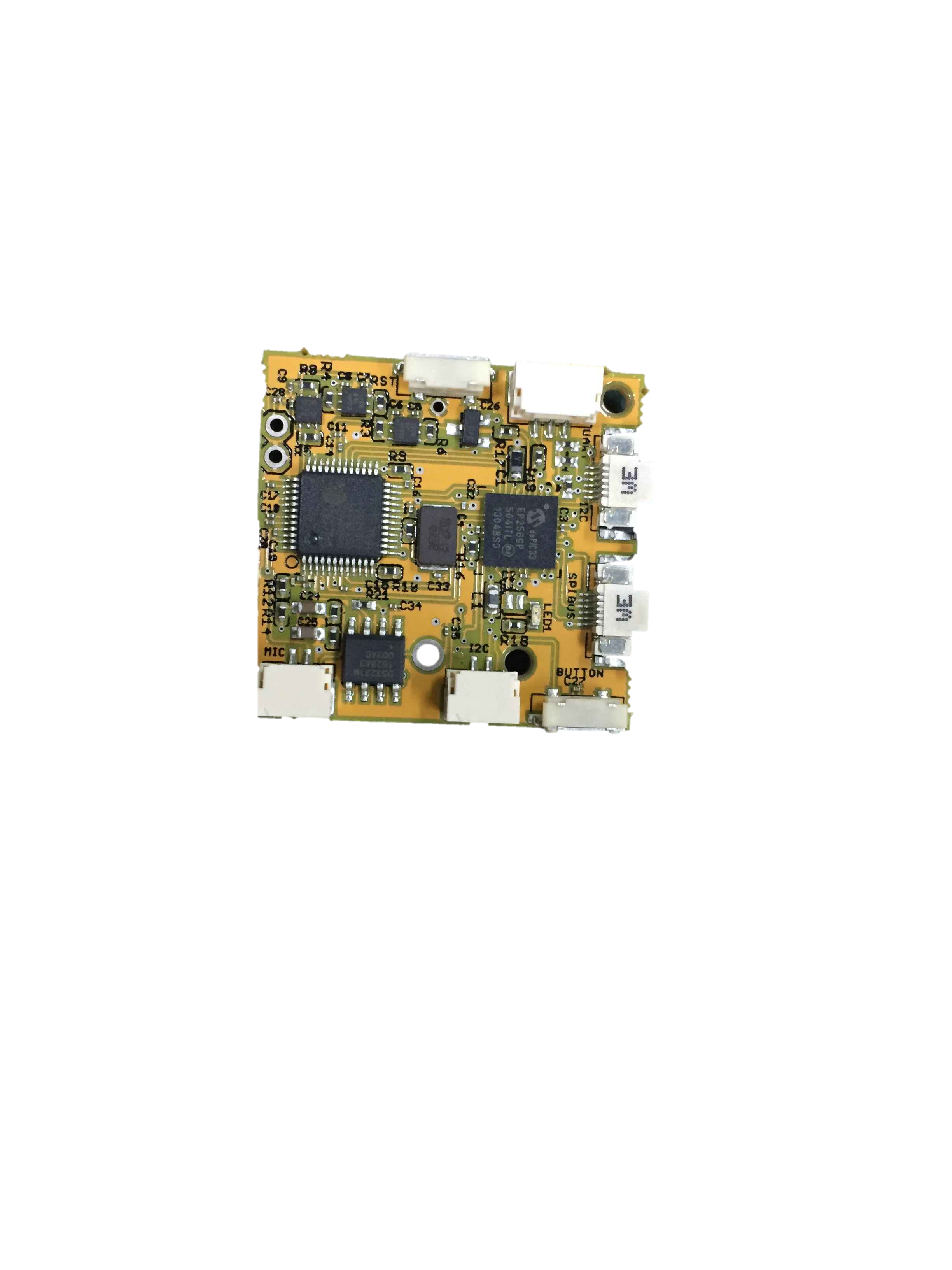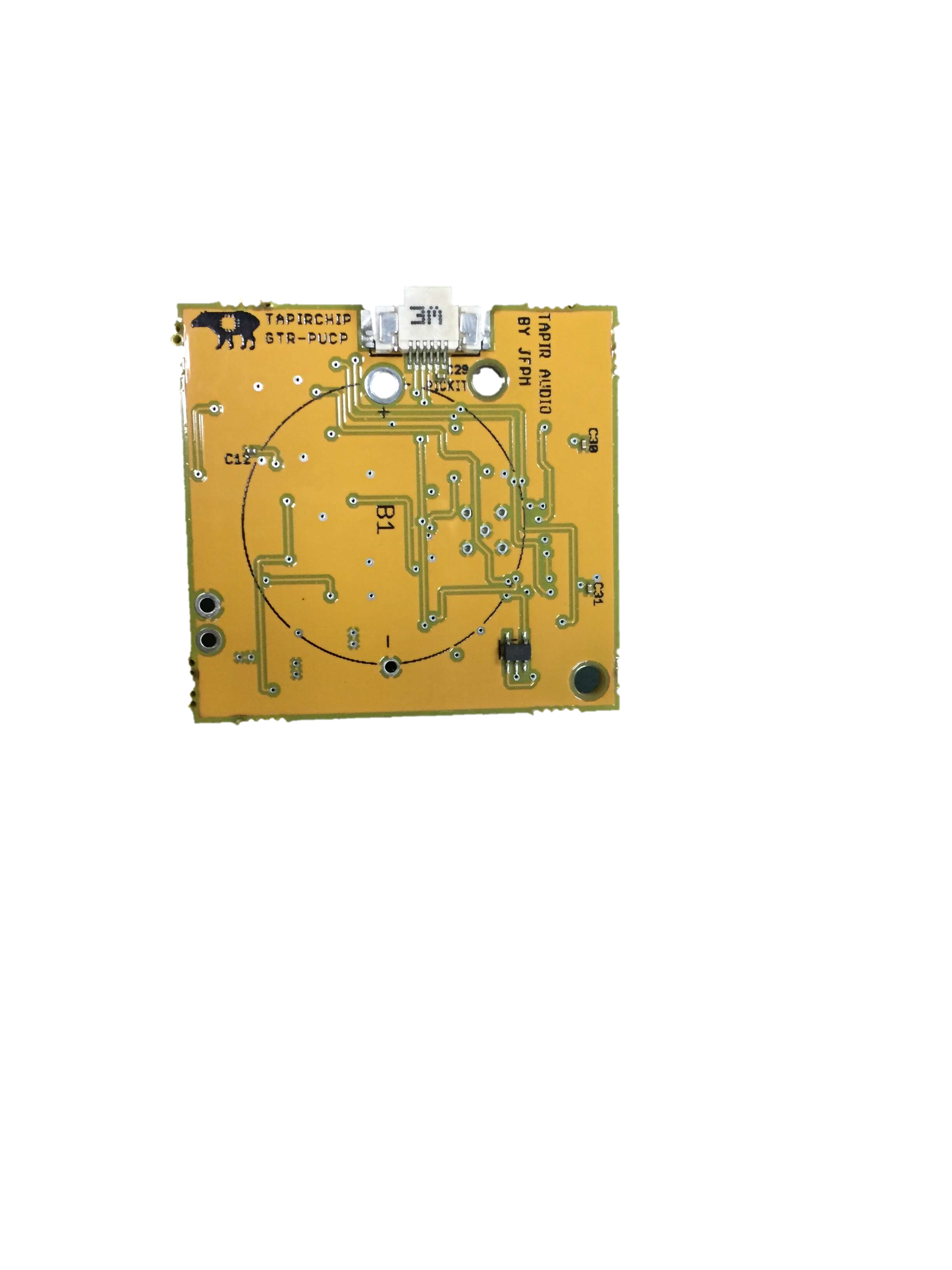PROJECT TAPIRCHIP
<<<<<<< HEAD [![Watch the video!] [(https://img.youtube.com/vi/K2XoNLCk-Mk/maxresdefault.jpg)] (https://youtu.be/K2XoNLCk-Mk) ======= [![Watch the video!] (https://img.youtube.com/vi/K2XoNLCk-Mk/maxresdefault.jpg)] (https://youtu.be/K2XoNLCk-Mk) >>>>>>> 2566a802ba2df93a2157bbe6df32cbea7a70422f
INTRODUCTION
The Amazon rainforest is considered to be one of the last natural reserves for animals, plants and trees; untouched by humans. It is also considered to be a frontline in the fight against global warning. Illegal mining and uncontrolled deforestation have become a menace to this environment. For this reason, protection and conservation policies must be created by the government. In this context biologists are doing their best effort to put into value the amazon rainforest; to show that preserving the amazon can be sustainable economic activity. The method employed by the biologists consists of doing an animal inventory; done mainly through walking and observation. This method is not reliable because animals rarely show their self’s in the presence of humans, besides most of the animals have nightlife activity. This makes it difficult to gather information of all the current species of the amazon. Trap cameras have become a popular method to study wildlife. These devices are attached to a tree and use a motion sensor that is triggered by the animal's movement to take a picture. These devices have the great advantage that they can work day and night for many days depending on the energy consumption. They can be installed in remote areas deep in the jungle were humans barely reach. The information gathered by the traps cameras can help biologist to discover new species, validate the presence of known species and also study animal bahaviour.
If a transmission system is implemented with the trap camera, the biologists could reduce their walking to the jungle and also monitor the device status. In commercial trap cameras the transmission is available through mobile services, but in the jungle the lack of a communication system makes it difficult to use this device. Therefore our purpose is to develop a trap camera that meets the biologist’s requirements and that has a communication system to transfer data to a central base.
The project TAPIRNET was an effort to implement a trap camera with a 900 MHz wireless radio. The results showed that the transmission in the jungle was very difficult due to attenuation from the trees. So we started a new project called TAPIRCHIP with the goal to develop a improved camera trap camera with the following advantages:
- The trap camera will have autonomy to operate for 3 months. This time is fair enough to determine the animal presence.
- The Camera minimum resolution had to be 5 Megapixels; this is desired by biologist to identify correctly animal species.
- The trap camera will have a 2.4 GHz wireless radio that can transmit the images to a center node. This will allow biologists to gain access to the pictures without walking and also monitor the camera status.
- The camera trap will have built-in sensors to capture information from the environment, such as: Temperature, Humidity and Sound.
The technology was developed in Lima, so technical support was close reachable to villagers living in and practitioners focused on Amazon rainforest.
Now, TAPIRCHIP is the trademark for an initiative to develop the simplest but still useful camera trap to map 20 millions Km2 of tropical forest all located at Global South. We expect to unleash the hardware blueprints and software code in order to organized people in the world theirselves can build the cameras and installed them in their neighbour forests.
We kindly hear any proposal of sustainability models, for example, sponsored by a big donor, develop and install the cameras by our side and publish the images in the web for a fee.
TAPIRCHIP is an original idea of Luis Camacho, the project was carried out between January 2014 and December 2017 in PUCP (Catholic University of Peru) under sponsorship of Peruvian Government through National Innovation Program for Competitiveness and Productivity - INNOVATE PERU - Grants N° 152-FINCyT-IA-2013 and N° 123-PNICP-PIAP-2015.
SYSTEM SPECS
This camera trap have the following characteristics:
- CMOS sensor with a resolution of 5 Megapixeles.
- 2.4 GHz Wi-Fi Radio to have a better throughput.
- Temperature, humidity and MP3 recorder, to have information about the environment.
- Li-on Battery for 3 months operation.
CMOS CAMERA
The CMOS camera controller uses a 5 megapixel CMOS sensor from Omnivision, a FIFO memory and a processor from Microchip. Since the captured picture data from de CMOS sensor is too big to be stored in the ram memory of the processor, a FIFO memory of 512 Kbytes is used to store temporally the picture data.
To recognize the characteristic pattern of animal species, biologists need to zoom into the image; and they have stated that a resolution of 2 megapixels is enough for this purpose. The OV5642 CMOS sensor from Omnivision was selected. The previous work to control this sensor found on the web helped in the development of the controller. The CMOS sensor outputs pictures with a quality up to 5 Megapixels, which means that the resolution can be set to 2, 3 and 5 Megapixels according to the needs of the biologists. Selecting a higher resolution means that picture will occupy more memory which will reduce the amount of pictures that an SD card can store. The CMOS sensor is controlled with a DSPIC processor selected for its high processing speed (60 MIPS). Besides the CMOS sensor, this processor will control the additional sensors needed to build a trap camera.
Schematics of the system:
2.4GHz Wi-Fi RADIO
Transmitting the images to a central node will give biologists access to the pictures without walking to the installation place. This can also be used to monitor the trap cameras current state such as: Battery remaining energy, SD card reaming space, CMOS sensor failure, etc. In the previous project 900 MHz radios were employed, the obtained transmission speed was around 30 Kbps. To increase the transmission speed the 2.4 GHz frequency was selected. To transmit the images the ESP8266 Wi-Fi chip is employed. This processor has gain a lot attention for many researches wanting to have a Wi-Fi connection, thus support to use its maximum capacity has been given. In this project the “ESP8266 thing dev” board from SPARKFUN was employed. Since the cameras traps will work in the jungle were human activity is minimum, the radios will begin to transmit at a specific hour. To achieve this, the DS3231 will alert the nodes to start the transmission.
Schematic of the system:
AUDIO RECORDER
Visual information of the environment gives a lot of information to the biologist; this can be increased by adding sound. For this reason the trap camera will not only take pictures of the animals, additionally a sound recorder is incorporated. To record sound, a microphone (1 channel - MONO) is used to transforms the physical waves into electrical signals. This signal is digitalized by an analog to digital converter. Finally this digital data must be converted into a readable format for the computer. The WAV format is a good option to record sounds into a compatible file for computers. The recorded file has the advantage of not losing its quality during the processing. On the other hand, the file size occupies a significant amount of memory, 50 MB for a 5 minutes stereo recording [10]. For a 4 GB memory approximately 80 files can be saved, this means that if one file is recorded for day, the memory will be full in 80 days, without having pictures. To manage the file size a compression format is required to save memory. MP3 is a compression format that eliminates the sounds that human ears cannot hear. The result is a file that occupies less memory than a WAV file, 3.4 MB for a 5 minutes stereo recording. To generate MP3 files; the VS1063a MP3 codec is used. This device includes an analog to digital converter, which allows you to connect a microphone directly.
Schematic of the system:
DESCRIPTION
The project has the following files:
1. CameraTrapCode_OV5642_dsPIC33EP
In this folder we can find all the code to control the OV5642 sensor, as well as its behaviour as a "Camera Trap".
int main(void) {
uint8_t error;
CPU_Init();
Camara_Init();
MAX17043_Init(); //Initializes the batter voltage tester
PIR_IntConfig();
CNPDBbits.CNPDB7 = 1;
while(PIR);
PIR_Detect=0;
DelayMs(100);
AhorroEnergia();
while(1)
{
Sleep();
if(TX_IN_PROGRESS && PIR_Detect){
NoAhorroEnergia();
if(!CamaraON()){
DelayMs(2700);
// FLASH = 1;
if(Read_voltage() == 0){
error = Camara_TomarFoto();
DelayMs(100);
error = Camara_TomarFoto();
}
// FLASH = 0;
}
TAKING_PHOTO = 0;
AhorroEnergia();
while(PIR);
PIR_Detect=0;
}
}
}
2. ImageTransmitProtocol_ESP8266
In this folder we can find the transmission protocol to transmit the images taken by the camera module. To allow the WiFi signal to be transmitted over the trees in the jungle, the antenas will be located on the top of the trees. For this purpose the nodes will work in 2 configurations. The first folder named "Nodes" will transmitt the pictures from the trap camera located in the ground to the top of the tree. The second folder named "Network" will transmit images from 4 nodes to a sink node, located on the top of the trees
Network node:
void setup() {
Serial.begin(115200);
DBG_OUTPUT_PORT.setDebugOutput(false);
trx.connectWiFiSTA();
func.init_BattM();
func.init_RTC();
sdf.initSD();
}
void loop() {
delay(100);
func.BattLevel(3.7); /* sets ESP8266 to sleep if the Battery Level is less than specified */
/*****REGISTRATION******/
while(counter-->0){
if(trx.send_httpcon("reg")){ //WAIT ACK_OK
if(trx.send_str("NODO1",5)) {
DBG_OUTPUT_PORT.println("\nSTRING NODO 1 SENT OK\n");
while(1){
if(trx.rec_buf(answer)){ /* In case something is received */
func.set_RTC(answer);
break;
}
}
counter=0 ; // NODE 1 REGISTERED
DBG_OUTPUT_PORT.println("\nREGISTRATION OK\n");
}
delay(10);
}
}
/***********************/
/********EXPECTING COMMMUNICATION FROM SERVER**********/
if(trx.rec_buf(answer)){ /* In case something is received */
DBG_OUTPUT_PORT.println("SERVER STARTED COMMUNICATION SUCCESFULLY");
if(!strcmp(answer,"SLEEP_")){ /*In case server sends node to SLEEP*/
DBG_OUTPUT_PORT.println("Set to SLEEP");
func.Sleep();
}
else if(!strcmp(answer,"WAKEUP")){
DBG_OUTPUT_PORT.println("Set to Wakeup");
digitalWrite(TX_PIN, LOW); Serial.println("SET PIN TX to transmit "); /* Tells other node to stop using SD memory */
if(!sdf.initSD()) {
if(!sdf.initSD()) {
if(!sdf.initSD()) {
trx.send_i("ERRD_SD.jpg");
SPI.endTransaction();
SPI.end();
digitalWrite(4,HIGH);
}
}
}
sdf.nextname("METADATA.DAT",nuevafoto);
while(strcmp((char*)nuevafoto,(char*)fotoanterior)){ // while nuevafoto is different from fotoanterior
Serial.print("\nFile to send: "); Serial.write(nuevafoto);
if (trx.send_i(nuevafoto)==2){ /* if time_exceeded */
Serial.println("\nTIMEOUT/LOST CONNECTION ... will restart \n");
func.config_RTC(EverySecond);ESP.deepSleep(0);
}
strcpy(fotoanterior,nuevafoto);
sdf.nextname("METADATA.DAT",nuevafoto);
delay(500);
digitalWrite(TX_PIN, HIGH); /* to indicate the DSPIC that it can take photos*/
}
Serial.println("\nNo new pictures to send");
trx.send_i("N1ENDPI.jpg");
}
else{
Serial.print("\nUnexpected characters - not WAKEUP nor SLEEP: ");
Serial.println(answer);
}
}
/****************************************************/
}Synk node:
void setup() {
Serial.begin(115200);
DBG_OUTPUT_PORT.setDebugOutput(true);
sdf.initSD();
trx.connectWiFiAP();
func.init_RTC();
server_central.on("/rset", HTTP_GET, rset);
server_central.on("/reg", HTTP_GET, reg_node);
server_central.on("/rcv", HTTP_GET, rcv_p);
server_central.begin();
DBG_OUTPUT_PORT.println("HTTP server started");
init_time=millis();
}
void loop() {
server_central.handleClient(); /* server_central_wifi.handleClient();*/
delay(300);
if(REG_TIME < millis() - init_time){ // Registering time finished
//Scan the nodes that were registered
if(!node_connected){ // If there is no node connected
if(NC[c]== 0xFF){ // Node[c] registered?
snprintf(val,8,"client%i",(c));
connect_node(val,"WAKEUP"); // send to node c WAKEUP
node_connected=1;
NC[c]=0x00; // Unregister the node
}
if (c==5){
delay(1000);
Serial.println(String("\n TRANSMISSION WITH NODES COMPLETED, SENDING ALL TO SLEEP")+TS);
for (int n=1;n<=4;n++){
if(TS[n]==0xFF){
snprintf(val,8,"client%i",(n));
Serial.println(String("Sending to sleep to node: ")+val);
connect_node(val,"SLEEP_");
}
delay(100);
}
func.Sleep();//---------------------------------------------------------------
}
else c++;
}
}
}3. Mp3Recorder_VS1063
In this folder we can find all the code to record audio in mp3 format using a VS1063 encoder/decoder with a dsPIC33EP processor.
int main(void) {
CPU_Init();
InicializaTIMER1(); // TImer of ~1ms
InicializaSPI1();
InicializaUART1();
InicializaIO();
delay_ms(10);
INTCON2bits.GIE = 1; //enable all interrupts
if(SDCard_init() == 1){
printf("Error microSD\r\n");
buzzer_error();
while(1);
}
else{
printf("SDCARD INICIALIZADA\r\n");
}
if(VSTestInitHardware() || VSTestInitSoftware()){
printf("Falla en inicializacion de VS1063\r\n");
buzzer_error();
}
else{
printf("Inicializacion de VS1063 OK\r\n");
buzzer_ok();
}
while (1) {
VSTestOffHardware(); // Turn off the module
habilitaIntExterna(); // Enable Extern interrupt
Sleep(); // Enable Sleep mode
deshabilitaIntExterna(); //Wake up
InicializaTIMER1(); // Restart timer 1
if(VSTestInitHardware() || VSTestInitSoftware()){
printf("Falla en inicializacion de VS1063\r\n");
buzzer_error();
}
// /* Reproduccion de audio */
// buzzer_ok();
// TaskVSPlayer(file_audio2);
buzzer_ok();
ini_test_button();
Rec_CreateDir(); // Create the RECORD file
Rec_SetNumFile(); // Set the number of record
pStr = Rec_SetNameFile(); // Set the new name file
TaskVSRecord(pStr, 48000, 160); // Start record
delay_ms(200);
// The buzzer indicate the end of record
buzzer_ok();
delay_ms(20);
buzzer_ok();
delay_ms(200);
}
return 0;
}





